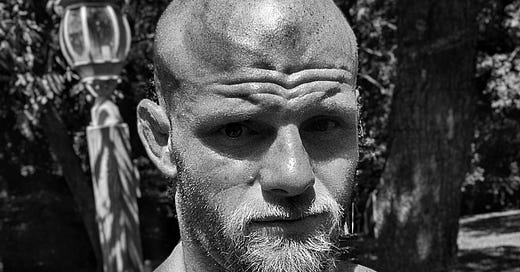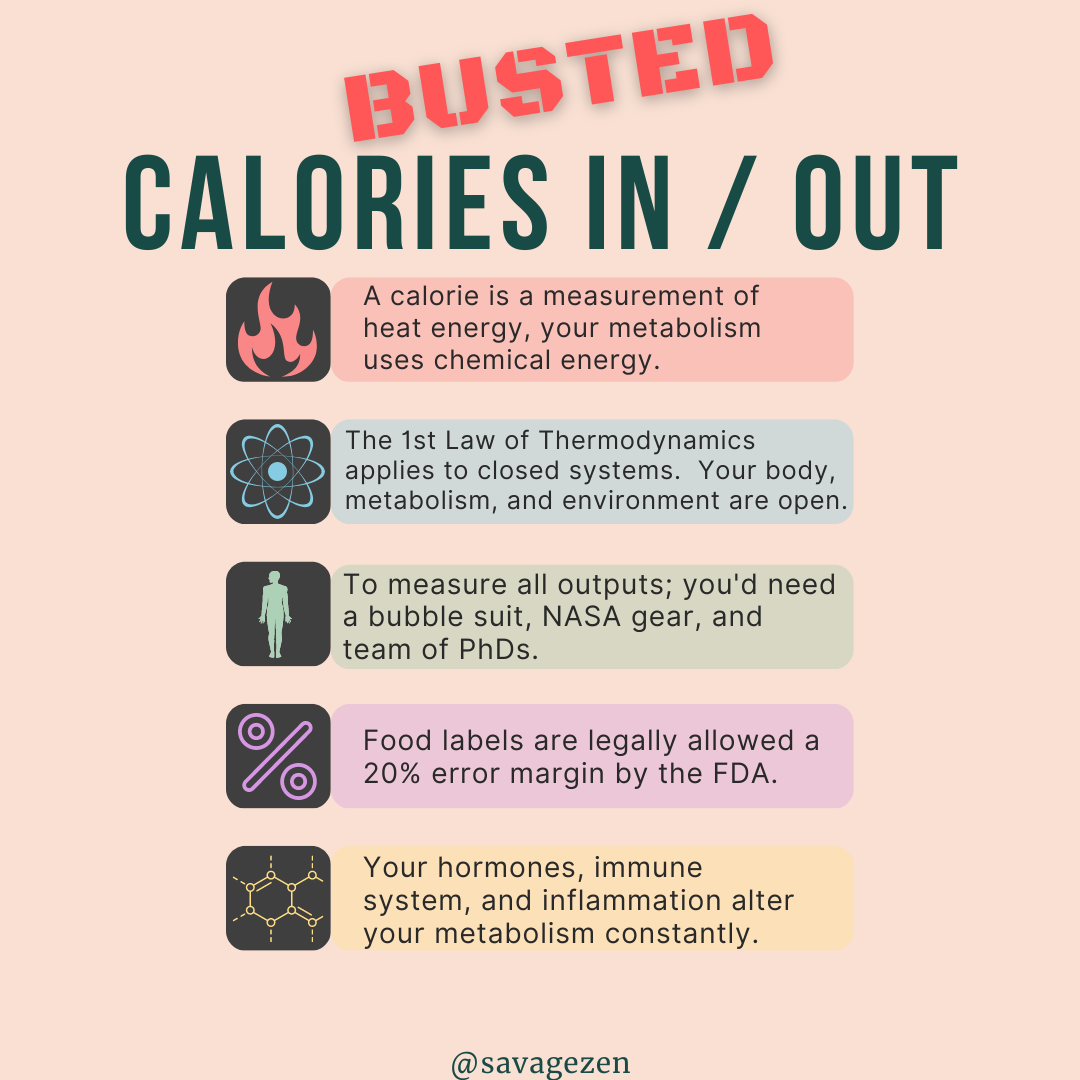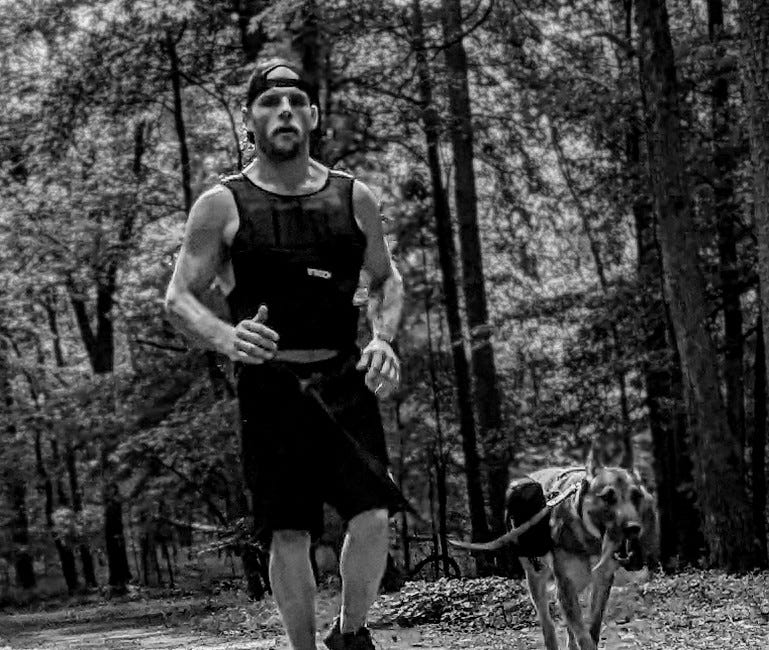Introduction:
Earlier this month I wrote about my summer supplement protocol, specifically to optimize testosterone. While getting “jacked and tan” is all well and good, so is getting shredded and tan!
After a few weeks of lollygagging I’ve committed to a practice weight cut to see if I can make a new / return to an old weight class. “Lightweight” in most BJJ no-gi competitions is around 160 lbs.
The caveat however, is that in all IBJJF tournaments you must weigh in “wet.” You have a maximum of 30 minutes between stepping off the scale and your first match. This is in stark contrast to smaller tournaments where you have several hours to re-hydrate or, as is common in MMA, a whole 24 hours.
I typically stay under 10% body fat year round and hover around 175 lbs. As you might imagine then, I don’t have much to lose and have to pull some levers pretty hard, which is why I’m tracking the process with this post series.
Do Calories Matter?
To be fair, the information in the graphic above doesn’t completely “debunk” the calories-in-calories-out (CICO) model, however it does shed a lot of light on that model’s glaring limitations. How long have we been told to “eat less and move more?”
Ignoring food quality is lazy. A cursory search of “protein leverage hypothesis” (ref., ref., ref.) or simply America’s “overfed, undernourished” state (ref.) should provide ample evidence.
Let me reiterate only once, I’m pushing some rare physiological limits here. Your body really doesn’t like being down around 5% body fat — which is where competitive bodybuilders are, and why they only stay there for an hour or so.
This series, and this process, are not lifestyle changes; they are intentionally temporary to provoke a temporary physiological state.
Start Weight: 177 lbs., 8% Body Fat
Adjusting Macronutrients:

Both Kevin Stock and Shawn Baker have suggested eating leaner cuts or at least cycling on / off fatty cuts every three days or so. It’s exactly what it sounds like; as in how traditional bodybuilders may carb cycle, we’re fat cycling here.
The recommendation for this doesn’t have anything to do with “fat is bad”, it’s simply to most calorie dense macronutrient so “restriction” is often easiest done by literally “trimming the fat.”
The Practice Weeks:
Weeks 0.1 and 0.2:
~3,300 calories / day
70% Fat, 30% Protein
Weight: 174 lbs.
Weeks 0.3 - 0.4:
~3,300 calories / day
70% Fat, 30% Protein
Weight: 172 lbs.
Weeks 0.5 - 0.6:
~3,300 calories / day
60% Fat, 35% Protein
Weight: 171 lbs.
This is where I started having problems. I’m not sure if it was the degree of restriction, change in macros, or my already low body fat, but I started having major sugar cravings when both fat and calories were decreased. Animal fat is incredibly nutrient dense so the elimination / restriction may have been a problem.
Additionally, I wasn’t super strict regarding carbs or alcohol. The “addictive” nature of these things is well documented and that effect may have been magnified in a restricted state. I resolved after the “practice weeks” to take the “practice cut” more serious and crack down even though I was already seeing results.
Getting Serious:
I went over to Keto Gains to poke around their macronutrient calculator. The calculator seems to try to keep you around 2.5 g of protein / Kg. of body weight, about 70% fat, and around 3% carbohydrates.
It’s worth noting that the "pre-workout” meal the calculator gave me was only about 200 calories. As I’ve demonstrated before, a “workout” could be 130 calories in 7 minutes, or 600 - 700 / hour.
It’s also worth noting that Cronometer won’t let you set a more aggressive goal than losing 2 lbs. per week, and advises you to see medical supervision.
A typical “fight camp” is around 4 - 6 weeks. That’s also a good time frame to take another stab at Capacity Training — which is the most relevant fitness discipline to combat sports.
The Official Practice Cut:
Week 1:
Average: 2,675 calories / day
Average: 14,420 steps / day (+4 hours BJJ training)
62% Fat, 36% Protein
Weight: 170 lbs.
Week 2:
Average: 2,585 calories / day
Average: 12,294 steps / day (+4 hours BJJ training)
63% Fat, 33% Protein
Weight: 169 lbs.
Week 3:
Average: 2,944 calories / day
Average: 10,113 steps / day (+ 4.5 hours BJJ training)
66% Fat, 31% Protein
Weight: 167 lbs.
Next month I’ll have a follow up on the final four weeks.
Summary:
While food quality (macro and micro nutrient density) should be addressed prior to purely restricting calories, the CICO model does have a place. It should be stated again, that that model, used in exclusivity, is doomed for failure if the prior nutrient issues aren’t addressed.
Diet-wise I’m sitting around 2,500 calories / day at 70% fat, 30% protein; even on training days I need to stay under 3,000 calories. The capacity “build” sessions will likely require some carbohydrates, but the dose is going to have to be very light.
I’ve also gone to leaner cuts of beef, and substituted some of the beef for salmon or sardines. A good whack of butter helps me control fat / calorie content than the fat that’s already in the beef. Similarly, I’ve trimmed a little protein (calories) by removing some of the egg whites from my breakfast — the yolks are the most nutrient dense part.
My supplement routine may be changing (stay tuned for the update!) because, as I’ve said I’m digging pretty deep here; but will continue to include:
~600 mg magnesium / day (or daily total food + supplement = 800 mg / day)
~5,000 IU / day Vitamin D (or weekly average of 9,000 IU / day from diet, sun, and supplement)
Stay tuned for updates on the process! #onward
Nonprophet Capacity Manual Review, Part 1
"What we have to discover is that there is no safety, that seeking is painful, and that when we imagine that we have found it, we don't like it." ~ Alan Watts Maybe I let myself down. Maybe the goal wasn’t clear and therefore the path traveled unnecessarily rugged. Then again, if it took Nonprophet 3 years to summarize 20 years of work in their







